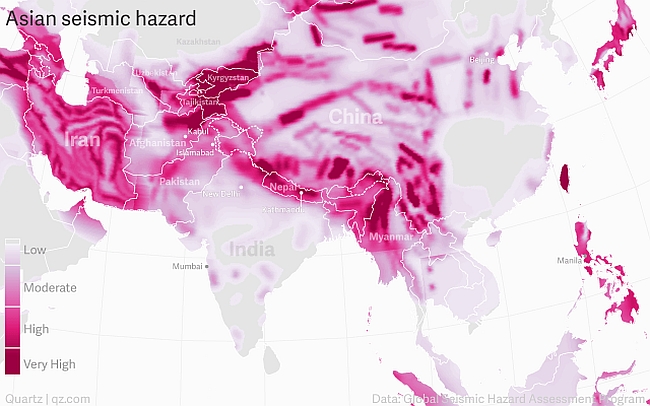
(Densely populated Kohima with rampant construction)
Nagas in general are fond of constructing buildings. Urban areas of Dimapur and Kohima has seen steep rise in construction. District headquarters are not far behind. How many of these buildings are earthquake proof?
Look at Kohima for example. The city has pressed the self-destruct button, exemplified by the build-build-build syndrome. The bureaucratic and popular mindset has become so focused on the need to build big pieces of infrastructure that it has destroyed and overburdened the once-beautiful city.
According to analysts from Manipur, the damaged concrete structures in Imphal were government offices and institutions and not private houses owned by government employees, exposing the difference in the execution of construction work by officials and the way they look after their private needs. Nagaland is not far behind!
Infrastructure development is a money-making venture for the bureaucrat-contractor-politician lobby. Now, we have to pay for our sins for building second grade buildings as strong earthquakes are expected to rattle these buildings.

(Nagaland falls in High Risk zone)
The experts of the National Institute of Disaster Managemen Delhi, who have warning of a bigger catastrophe in North East region, correctly says that the DNA of disaster management has to change, the states need to develop a sound building code and policymakers need to understand the threat of a “natural time bomb” and dovetail it into every plan because earthquakes can have huge effects on the local or regional economy.
Politicians also need to be aware of the political ramifications of a disaster. Many leaders have lost their reputation and government to such natural phenomena. Time to think – How many buildings will stand if a 8+ magnitude earthquake hits! The time has come for the Northeast to develop a well-drawn up disaster preparedness plan and a mitigation policy. (NagasConnect.com)